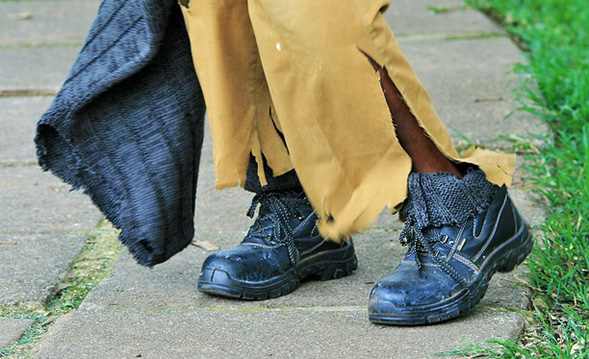Visualizing San Diegos Homeless Crisis
SDSUs Institute for Public Health assisted in developing an online tool to help visualize the effectiveness of resources for homeless San Diegans.

While the number of homeless San Diegans is up five percent from last year’s tally, many people working directly with the city’s homeless population have long maintained that the government-mandated count that captures the statistics on homelessness does not paint an accurate picture. The data from the annual point-in-time count is crucial for numerous reasons, including the fact that the U.S. Department of Housing and Urban Development (HUD) uses it to allocate funding for homeless programs.
To get a better idea of what resources work to combat homelessness, the San Diego Regional Task Force on the Homeless (RTFH) asked San Diego State University’s Institute for Public Health (IPH) to assist in developing a tracking system for those facing housing insecurities.
“Instead of a one-day count, we used numbers collected by service providers in the county to visualize San Diego’s homeless population,” said Suzanne Lindsay, associate professor of epidemiology and the executive director of the IPH. “The result is a comprehensive tool that shows how many people enter the system, what resources they use and how they fare over a set period of time.”
The Homeless System Framework shows that in fiscal year 2016, more than 19,000 people entered the region’s system of care. Of those more than 19,000 people, nearly 64 percent were new to the system, meaning they had not asked for assistance in the past.
The Homeless System Framework also visualizes which services offered to those with a lack of permanent shelter provide the best results. Previous HUD research has shown that many homeless individuals who are placed into subsidized housing, eventually end up back on the streets because they require other services, beyond a home, to help them get their lives back on track.
“The System Framework is a true game-changer because it provides us with a comprehensive look at the population we serve and allows us to monitor the outcomes of the system of care as a whole,” said Dolores Diaz, executive director of the RTFH. “With the help of the framework, we anticipate much more rapid progress in our efforts to reduce homelessness as we learn what is working and not working in our community, so we can focus on the right service for each client the first time they ask for help."
About a dozen SDSU students participated in creating the Homeless System Framework.
“This project is an excellent example of a partnership that directly contributes to improving our community while offering SDSU students a real-life work experience,” said Lindsay. “We will continue to monitor the data to measure the impact of the changes that are being implemented.”



